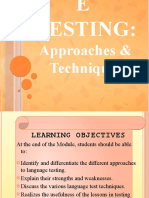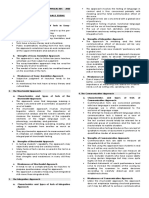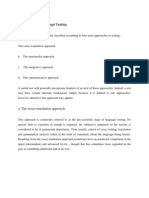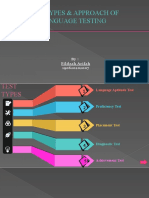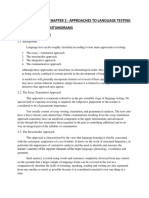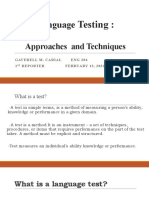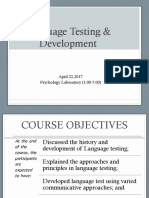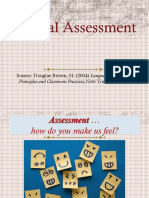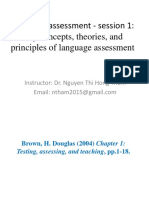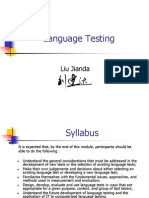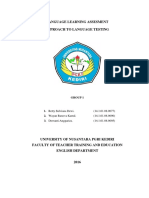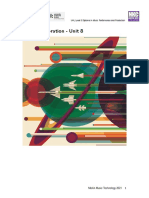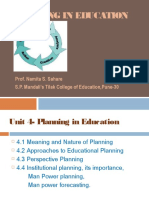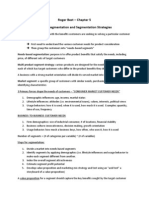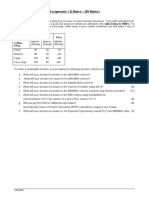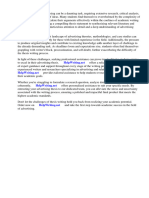0% found this document useful (0 votes)
58 views28 pagesApproaches To Language Testing
The document discusses various approaches to language testing including essay translation, structuralist, integrative, communicative, and computer-based approaches. It provides details on the characteristics, advantages, limitations and types of tests used in each approach.
Uploaded by
Phúc Châu HoàngCopyright
© © All Rights Reserved
We take content rights seriously. If you suspect this is your content, claim it here.
Available Formats
Download as PPTX, PDF, TXT or read online on Scribd
0% found this document useful (0 votes)
58 views28 pagesApproaches To Language Testing
The document discusses various approaches to language testing including essay translation, structuralist, integrative, communicative, and computer-based approaches. It provides details on the characteristics, advantages, limitations and types of tests used in each approach.
Uploaded by
Phúc Châu HoàngCopyright
© © All Rights Reserved
We take content rights seriously. If you suspect this is your content, claim it here.
Available Formats
Download as PPTX, PDF, TXT or read online on Scribd
/ 28

